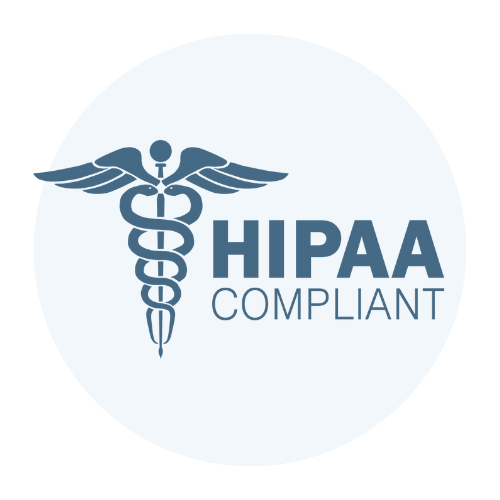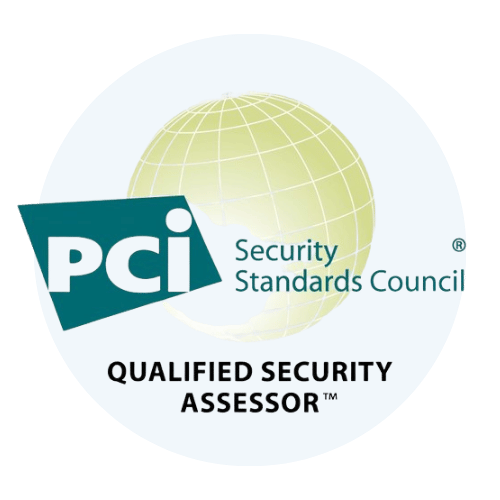Comprehensive Guide to Threat Management: Protecting Your Digital Assets
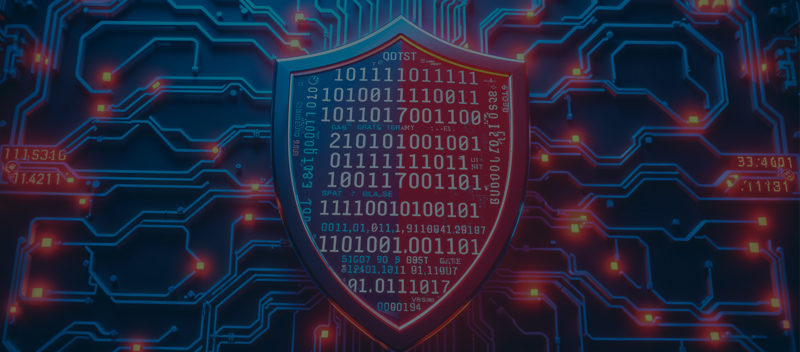
Did you know that there were 2,365 cyberattacks in 2023, with 343,338,964 victims? 2023 saw a 72% increase in data breaches since 2021, which held the previous all-time record. This statistic underscores a critical reality: effective threat management is no longer optional. We’ll examine the basic principles of threat management in this extensive guide, including the various kinds of threats you may encounter and the countermeasures that are available. Our goal is to provide you with the information you need to safeguard your business against any security breaches and remain secure in the digital era. What is Threat Management? The main goal of threat management is to keep your digital environment safe. It’s the methodical process of locating, assessing, and dealing with possible security risks that might endanger your business. Why does this matter to you? Well, cyber threats are always changing in today’s fast-paced digital environment. This might be an intimidating task if you’re managing an enterprise. Here’s where threat management truly shines: — Data Security It ensures that your critical data — like customer details and financial information — remains confidential and protected from cybercriminals. By proactively managing threats, you reinforce the security of your data, making it significantly harder for unauthorized access. —Operational Continuity By tackling threats early, you can keep your business operations smooth and uninterrupted, even in the face of potential cyber-attacks. With effective threat management, you can identify such threats before they affect your systems, ensuring that your business remains operational, and clients’ needs are met without disruption. — Reputation Protection Your brand’s reputation is on the line. Effective threat management helps maintain trust and reliability, showing customers that their information is secure with you. When you manage threats well, you demonstrate your commitment to their security, which helps in building long-lasting trust and client loyalty. — Cost Savings Addressing security issues proactively is often less expensive than dealing with the aftermath of a breach. Investing in efficient threat management can save you significant amounts in potential fines, legal fees, and damage control. Learn more about our Managed Detection and Response, Here Types of Threats In the world of threat management and security, understanding the types of threats you’re up against is crucial. Let’s dive into some common and emerging threats that businesses must navigate. Common Threats Malware: This encompasses various malicious software, including viruses, worms, and trojans, designed to damage or disrupt your systems. It’s like a digital pest, always looking for a way in. Phishing: Watch out for these deceptive emails or messages that look legitimate but aim to steal sensitive information, like passwords and credit card numbers. Phishing is a classic scam but remains incredibly effective. Ransomware: This nasty type of malware locks you out of your own files and demands a ransom to regain access. It’s not just a financial threat; it can paralyze your operations. Social Engineering: Attackers use manipulation to trick you into divulging confidential information. It’s less about technology and more about exploiting human psychology. Emerging Threats As technology advances, so do the threats. Here are some to keep on your radar: AI-Powered Attacks: Using artificial intelligence, attackers can automate and enhance the sophistication of their attacks, making it harder to detect and fend off. It’s a game of cat and mouse, and AI is leveling the playing field for cybercriminals. IoT Vulnerabilities: With the rise of Internet of Things devices, from smart refrigerators to industrial sensors, each connected device represents a potential entry point for threats. Ensuring their security is paramount in today’s digital landscape. Understanding these threats is the first step in effective threat management and ensuring your business is protected against both known and emerging security challenges. Threat Management Solutions Having the proper threat management systems in place is crucial for protecting your digital assets. Let’s examine a few essential tools you should consider. – Firewalls Think of a firewall as your first line of defense. It prevents unwanted access by serving as a barrier between your internal network and the outside world. A firewall provides protection against unauthorized access by screening and rerouting traffic according to pre-established security rules. – Intrusion Detection and Prevention Systems (IDPS) These systems are like vigilant guards, continuously monitoring your network for suspicious activity. Thanks to IDPS’s real-time detection and blocking capabilities, threats may be neutralized before they have a chance to do damage. – Antivirus and Antimalware Software Viruses and malware are constant threats, and having robust antivirus and antimalware protection is a must. These programs scan your systems for known threats, helping to neutralize them before they can inflict damage. – Data Loss Prevention (DLP) Protecting sensitive data is crucial. DLP solutions help prevent data breaches by monitoring, detecting, and blocking unauthorized data transfers. This ensures your confidential information doesn’t fall into the wrong hands. – Security Information and Event Management (SIEM) SIEM solutions collect and analyze security data across your network. They provide a comprehensive view of your security posture, helping you quickly identify and respond to potential threats. With SIEM, you can gain insights and maintain a proactive security strategy. By implementing these threat management solutions, you equip your business with the tools needed to protect against a wide array of threats. Threat Management Services Navigating the complex threat management landscape can be daunting, but you don’t have to go at it alone. Outsourcing to a Managed Security Services Provider (MSSP) like TrustNet can offer invaluable support. Let’s explore the services that can bolster your security strategy. Managed Security Services Provider (MSSP) Comprehensive Security Monitoring: TrustNet provides around-the-clock surveillance, detecting and mitigating threats as they arise. This proactive approach helps prevent breaches before they escalate. Advanced Threat Management: With cutting-edge technologies, TrustNet offers tailored solutions that adapt to the ever-evolving threat landscape. This includes identifying patterns and anomalies that could indicate potential attacks. Network Security and Compliance: TrustNet ensures your network is fortified against unauthorized access. We also help you navigate the complexities of regulatory compliance, ensuring that your security measures meet industry
Mastering Cybersecurity Risk Assessment

Strong security measures are more important than ever as cyber-attacks become more sophisticated and frequent. Effective cybersecurity strategies are built on the critical process of risk assessment, which forms the basis for protecting sensitive data and systems from possible breaches. This blog post will equip IT professionals and security analysts with the essential knowledge and techniques needed to master cybersecurity risk assessment, ensuring their organizations remain secure and resilient. What is Cybersecurity Risk Assessment? Cybersecurity risk assessment is a strategic process that involves identifying, assessing, and prioritizing potential threats to an organization’s digital assets. By understanding these risks, organizations can develop tailored strategies to safeguard their data and systems against cyberattacks effectively. Key Benefits of Regular Risk Assessments Engaging in regular risk assessments offers a host of benefits for organizations: Enhanced Security Posture: By pinpointing vulnerabilities, organizations can bolster their defenses, creating a more resilient security infrastructure. Minimized Risk of Data Breaches: Proactively managing risks reduces the likelihood of unauthorized access to sensitive data, thereby averting costly breaches. Improved Regulatory Compliance: Routine assessments ensure adherence to industry standards and regulations, helping to avoid fines and legal complications. Optimized Resource Allocation: Understanding risk landscapes allows organizations to allocate their resources more strategically, focusing on areas of greatest need. Incorporating regular risk assessments into your cybersecurity framework not only strengthens your defenses but also boosts operational efficiency. With TrustNet’s extensive experience in conducting these assessments and our ability to deliver tailored solutions, your organization can stay secure and agile in the face of evolving cyber threats. For more on our Cybersecurity Risk Assessments services, Click Here The Risk Assessment Process Navigating the cybersecurity world can feel overwhelming, but breaking it down into manageable parts makes all the difference. Let’s dive into the essential steps of a risk assessment process that keeps your organization’s digital assets secure. — Identify Assets Start by figuring out what you need to protect. It’s like taking stock of your prized possessions—data, systems, applications. By identifying and categorizing these assets, you can focus your security efforts where they count the most. — Threat Identification Knowing what threats are out there is key. Cyber threats vary from malware to more insidious phishing and ransomware attacks. Understanding these dangers helps you set up defenses that are ready for action before the threats strike. — Risk Analysis Once you know the threats, it’s time to analyze the risks they pose. This involves looking at how likely each threat is to occur and the potential impact on your assets. Tools like “likelihood score” and “impact score” can help paint a clear picture, guiding you to spot the most pressing risks. — Risk Prioritization Not every risk needs your immediate attention. Prioritize them based on severity and likelihood. By focusing on the most significant threats first, you ensure your efforts are strategic and effective, tackling the big issues head-on. — Risk Mitigation With priorities set, it’s all about mitigating those risks. Whether it’s applying software patches or beefing up security measures, the goal is to bring risks down to a level you can manage, keeping your important assets shielded from harm. — Risk Monitoring and Review Remember, the cybersecurity landscape is always changing. Regularly reviewing and monitoring risks is crucial to staying ahead. By updating your assessments, you can adapt to new threats and maintain strong defenses. By following these steps, you create a robust strategy that not only secures your organization now but also prepares you for the challenges ahead. Common Risk Assessment Techniques When it comes to assessing risks, there are various techniques at your disposal, each offering unique insights and approaches. Let’s explore some popular ones that can help you navigate the complexities of risk management. Qualitative Techniques Brainstorming: This technique involves gathering a group of stakeholders to generate ideas about potential risks. It’s a collaborative and creative process that can uncover risks you might not immediately think of. However, it can sometimes lead to subjective outcomes, as it heavily relies on the participants’ perspectives. Expert Judgment: Tapping into the knowledge of seasoned professionals can provide valuable insights. Experts can assess risks based on their experience and intuition. While this approach adds credibility, it can be limited by the expert’s bias or blind spots. SWOT Analysis: Standing for Strengths, Weaknesses, Opportunities, and Threats, SWOT Analysis is a strategic planning tool that helps identify internal and external factors that could impact objectives. While it’s excellent for gaining a broad overview, it can sometimes oversimplify complex issues without deeper analysis. Quantitative Techniques Failure Modes and Effects Analysis (FMEA): This method is more structured and data-driven. It involves identifying potential failure modes, evaluating their effects, and prioritizing them based on severity, occurrence, and detection. FMEA provides a clear, numerical basis for decision-making. However, it can be time-consuming and requires accurate data to be truly effective. Monte Carlo Simulation: This technique uses statistical methods to model and analyze the impact of risk. By running numerous simulations, it provides a probability distribution of possible outcomes, which helps in understanding potential risks and their impacts. Its main challenge is that it requires significant computational resources and expertise to interpret the results effectively. Decision Tree Analysis: Offering a visual representation of decisions and their possible consequences, Decision Tree Analysis helps in evaluating different risk scenarios. It’s beneficial for making informed choices in uncertain conditions, though it can become complex with numerous branches and possibilities, sometimes leading to oversimplified assumptions. Advantages and Disadvantages Each technique comes with its own set of strengths and weaknesses. Qualitative Techniques: These are generally more flexible and easier to implement quickly. They facilitate open discussions and can adapt to different situations. On the downside, they may lack precision and can be influenced by personal biases. Quantitative Techniques: These offer a more objective and systematic approach backed by data and analysis. They are great for in-depth investigations and can provide measurable results. However, they often require more resources, time, and expertise to execute properly. By understanding these techniques, you can choose the right
Cybersecurity Monitoring: Your Vigilant Sentinel

Even the most sophisticated security systems are being tested by the increased complexity of cybersecurity threats. There has never been a more pressing need for proactive security measures since fraudsters are using more and more sophisticated approaches. Enter cybersecurity monitoring—your vigilant sentinel in this relentless battle. Continuous monitoring is vital to detect and respond to threats in real time, ensuring that your organization remains one step ahead of potential breaches. This comprehensive guide explores the essential aspects of cybersecurity monitoring, providing insights into best practices, advanced technologies, and the value of a vigilant security posture. The Importance of Proactive Monitoring Staying ahead of threats is crucial in the ever-evolving world of cybersecurity. Proactive monitoring offers you peace of mind with its robust capabilities. Let’s dive into why this approach is essential for your organization. — Real-Time Threat Detection Imagine being able to spot threats as they happen. With real-time threat detection, continuous monitoring allows you to do just that. It acts as your eyes and ears, identifying anomalies and suspicious activities the moment they occur. This proactive stance means you’re not just reacting to incidents; you’re ready to tackle them head-on, minimizing potential damage. — Incident Prevention Proactive monitoring isn’t just about reacting—it’s about preventing incidents before they happen. By identifying vulnerabilities early, you can address them before cybercriminals exploit them. Think of it as your security safety net. You avoid the costly aftermath of security breaches by staying one step ahead. — Compliance Adherence Navigating the complex landscape of regulatory compliance can be daunting. We know how important it is for you to meet industry regulations and standards. Continuous monitoring plays a pivotal role in ensuring compliance, and keeping your systems aligned with the necessary requirements. This not only helps you avoid hefty penalties but also strengthens your overall security posture. Incorporating proactive monitoring into your cybersecurity strategy is like having a vigilant sentinel by your side, ready to guard against emerging threats and safeguard your operations. By focusing on real-time threat detection, incident prevention, and regulatory compliance, you ensure your organization is resilient in the face of cyber challenges. Learn more about our Managed Security services, Here Essential Components of Cybersecurity Monitoring When it comes to fortifying your cybersecurity posture, understanding the essential components of monitoring is key. Let’s delve into the critical elements that enhance your defense mechanism. 1. Network Traffic Analysis Imagine your network as a vast, complex roadway system. Network traffic analysis acts as a vigilant traffic monitor, meticulously scrutinizing every data packet that enters and exits your network. You can identify potentially dangerous actions and suspicious activity before they become more serious by doing in-depth network traffic analysis. Your digital environment’s security and integrity depend on you taking this proactive stance. 2. Log Management Every digital interaction leaves a trace—logs. Log management is similar to keeping an exhaustive log of these exchanges. This procedure strengthens your security measures by not only assisting in breach identification but also offering insightful information on averting such instances in the future. 3. Security Information and Event Management (SIEM) Think of SIEM as your centralized security hub. It compiles, examines, and links security events from every device on your network. Serving as a tactical command center, SIEM provides an overview of the security environment around your company. Its capacity to deliver thorough reporting and real-time warnings gives you the opportunity to quickly address risks and guarantee the security of your operations. 4. User and Entity Behavior Analytics (UEBA) Internal threats can often be the most elusive. UEBA is an advanced tool for tracking and evaluating user and object activity. It assists in locating any security risks coming from within your business by spotting departures from typical behavior, such as odd access patterns or data consumption. Thanks to this sophisticated analysis, even a minute or an unusual activity can be identified and dealt with right away. Incorporating these components into your cybersecurity strategy not only strengthens your defense but also provides a holistic approach to threat management. Each element serves a distinct purpose, working together to safeguard your organization against an ever-evolving threat landscape. Advanced Monitoring Techniques It takes a combination of innovation and knowledge to keep ahead of any risks in the always-changing field of cybersecurity. Let’s explore some cutting-edge methods that can strengthen your security protocols and maintain your organization’s resistance to online threats. Artificial Intelligence (AI) and Machine Learning (ML) These technologies excel in automating threat detection and analysis. AI in cybersecurity provides the capability to learn from each new threat, adapting and evolving constantly. ML in cybersecurity allows systems to sift through enormous datasets, identifying patterns and flagging anomalies with remarkable speed and accuracy. This means you can respond to threats almost in real-time, ensuring your defenses are not just reactive but proactive. Behavioral Analytics Consider behavioral analytics as the intuitive part of your security strategy. It goes beyond surface-level monitoring to analyze deeper, more nuanced user behaviors. By focusing on deviations from normal activity—such as unusual login times or accessing atypical files—behavioral analytics can spot threats that might slip past traditional security measures. This approach equips you to address potential issues before they escalate, enhancing your security posture with precision. Threat Intelligence Integration In today’s fast-paced digital world, keeping abreast of emerging threats is non-negotiable. You can make sure that your security plan is up to date with the most recent cyber threats by including threat information feeds. You can now anticipate and get ready for assaults before they come thanks to this integration. With threat intelligence, you’re no longer just reacting to incidents; you’re intelligently positioning your organization to defend against them effectively. By using these cutting-edge monitoring strategies, you may strengthen your present security framework and make sure you’re ready for any obstacles down the road. Overcoming Challenges in Cybersecurity Monitoring Let’s examine some of the main obstacles to cybersecurity monitoring and how to overcome them. Data Overload Data overload is a real issue. With countless logs and alerts pouring in, distinguishing
Enhancing Risk Analysis with GhostWatch
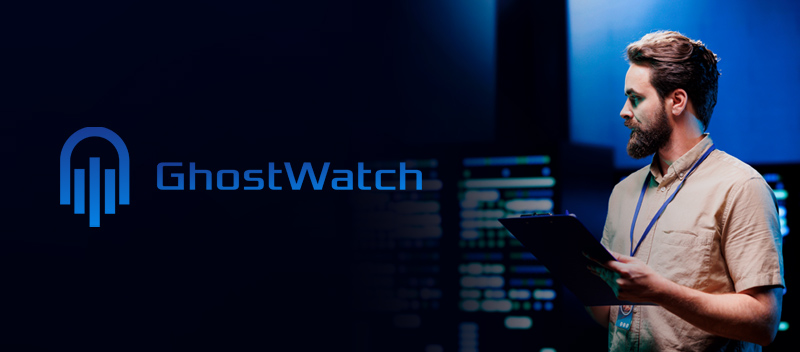
Keeping the digital assets of your business safe should be your first priority in the modern world. Strong risk analysis is essential because cyber attacks are becoming more common and sophisticated. It’s about proactively anticipating problems and skillfully addressing hazards. This blog article examines in more detail how GhostWatch assists businesses in identifying, classifying, and ranking cybersecurity hazards. GhostWatch. a comprehensive risk analysis solution, offers the knowledge and resources you need, regardless of your role—Risk Manager or CISO—to increase security with confidence. The Challenges of Traditional Risk Analysis Traditional risk analysis methods, like using spreadsheets and manual assessments, often come with a set of limitations that can hinder an organization’s ability to effectively manage cybersecurity risks. These methods can be and have: Time-consuming and resource-intensive: Manual processes demand a lot of time and effort, diverting valuable resources away from other critical tasks. Prone to human error and bias: Relying on individuals to manage and interpret data can lead to mistakes and subjective judgments, skewing the results. Lack of granularity: Traditional assessments often lump risks together, missing nuances. For instance, a cybersecurity breach can have varying financial impacts based on factors like the scale of the attack and data sensitivity. Without considering these differences, cost estimations can be off the mark. Inadequate consideration of external factors: Many traditional methods overlook external influences such as market changes or new regulations that can drastically alter risk impact. Ignoring these can lead to a skewed understanding of financial implications. Over-reliance on historical data: While past data can offer insights, it often doesn’t account for current changes in technology or market dynamics. This reliance can result in outdated and inaccurate risk assessments. In summary, while traditional methods have been the backbone of risk analysis, their limitations in today’s rapidly changing environment highlight the need for more advanced solutions like GhostWatch. For more about GhostWatch Managed Security Services, Click Here How GhostWatch Streamlines Risk Analysis GhostWatch offers a smarter way to tackle risk analysis, making the process easier and more effective. Here’s how it can transform your approach: — Automated Data Collection Say goodbye to tedious manual data entry. GhostWatch streamlines this procedure and provides a smooth way of obtaining all-encompassing information. This effectiveness guarantees that you always get access to the most recent data while also saving you time. — Continuous Threat Monitoring Real-time monitoring is revolutionary in cybersecurity, where things move quickly. GhostWatch monitors your system continuously, detecting weaknesses and new threats as they materialize. This proactive strategy minimizes possible harm by enabling prompt intervention. — Risk Prioritization Framework Not all risks are created equal, and GhostWatch understands that. It uses a sophisticated framework to prioritize risks based on their severity and likelihood, so you can focus your resources where they matter most. — Reporting and Compliance In-depth reports are essential for managing compliance and making well-informed decisions. GhostWatch offers thorough reports that not only assist you in adhering to industry requirements but also provide you with the knowledge required to advance your security strategy. By harnessing these features, GhostWatch transforms risk analysis from a daunting task into a streamlined process, empowering you to protect your organization with confidence. GhostWatch vs. Traditional Methods: A Clear Advantage In terms of risk analysis, GhostWatch is distinct from traditional methods. We have created a straightforward comparison table that highlights the main advantages GhostWatch has over more traditional methods to emphasize these differences. Aspect GhostWatch Traditional Methods Time Efficiency Automated processes save significant time. Manual processes are time-consuming. Accuracy Offers high accuracy with precise data analytics. Prone to human error and potential biases. Cost-Effectiveness Reduces costs by streamlining operations. Often requires more resources and manpower. Proactive Threat Detection Continuous monitoring identifies threats as they emerge. Reactive approach, often missing new threats. Not only does GhostWatch revolutionize risk analysis, but it also has distinct benefits above traditional methods. Using automated tools increases accuracy and reduces time spent, making it an affordable option that keeps you ahead of potential risks. TrustNet: The Trusted Partner for Enhanced Risk Analysis As the provider of GhostWatch, TrustNet stands out with our deep expertise and commitment to enhancing risk analysis. Our team is composed of seasoned experts who understand the nuances and challenges of risk management, equipping you with the insights and tools you need to stay ahead. Expertise You Can Count On At TrustNet, we bring years of experience to the table, ensuring that your organization is not just prepared but proactive in its risk management efforts. Our experts work closely with you to customize GhostWatch to fit your unique needs, offering tailored solutions that address your specific challenges. Seamless Implementation and Ongoing Support Implementing GhostWatch is a seamless experience with TrustNet. Our all-inclusive services help you navigate the setup procedure with the least amount of disturbance and the most effectiveness. However, our dedication continues beyond there. You will always have an expert to turn to thanks to our continuous support services, whether you need help with system upgrades or strategic advice on new threats. With the technology and knowledge to protect your organization’s future, TrustNet is committed to helping you make the most of GhostWatch. When you work with us, you get a partner who shares your vision and understands the importance of risk analysis. Unlock Your Security Potential with GhostWatch GhostWatch empowers organizations to transform risk analysis with unparalleled efficiency, accuracy, and cost-effectiveness. By automating complex processes and providing proactive threat detection, GhostWatch ensures that your organization stays ahead of potential risks, reinforcing trust and enhancing operational excellence. Discover how TrustNet can help you harness the full power of GhostWatch to fortify your security posture and achieve regulatory compliance with confidence. Enhance Your Risk Analysis with GhostWatch. Request a Demo today.
The Definitive Guide to Penetration Testing Methodology

Navigating the digital world today can feel like a high-stakes game of cat and mouse, where cyber threats are constantly evolving and adapting. They’re getting smarter, and that means your security strategy needs to stay sharp too. This is where penetration testing steps in. This is having a trusted ally who can simulate cyber-attacks, helping you uncover vulnerabilities before someone else does. We’re going to walk you through the ins and outs of penetration testing in this article, dissecting the intricate methodology and best practices. Our goal is to provide you with the knowledge and resources you need to fortify your cybersecurity defenses. Armed with this understanding, you’ll be more capable of safeguarding your business from a constantly evolving array of online threats. The Value of Penetration Testing Cyber threats are lurking around every corner, so understanding your organization’s security strengths and weaknesses is crucial. That’s where penetration testing becomes invaluable. Let’s explore how it can help you safeguard your digital assets: — Identify Vulnerabilities You might think your security measures are airtight, but hidden vulnerabilities could still exist within your network. Penetration testing functions as a magnifying glass, revealing vulnerabilities that malevolent actors may take advantage of. By using this vulnerability assessment, you may take care of these problems before they become significant risks. — Assess Security Posture How strong is your defense against cyber intrusions? A thorough evaluation of one’s security posture is provided via penetration testing. It assesses your present defenses against possible intrusions and provides you with a clear picture of what’s functioning and what needs to be improved. You may strengthen your security measures by making well-informed judgments with this knowledge. — Compliance Verification In today’s regulatory landscape, meeting industry standards isn’t just a good idea—it’s a necessity. Penetration testing helps you ensure regulatory compliance by demonstrating that your security practices align with required regulations. This not only keeps you in good standing with industry guidelines but also strengthens trust with your clients and partners. Penetration testing is about staying ahead of cyber threats and ensuring your defenses are always up to the challenge. [et_pb_column type=”1_3″ _builder_version=”4.21.2″ _module_preset=”default” background_color=”RGBA(255,255,255,0)” custom_padding=”|20px|30px|20px|false|true” custom_css_main_element=”position: -webkit-sticky;||position: sticky;||top: 160px;” border_radii=”on|12px|12px|12px|12px” global_colors_info=”{}” custom_css_main_element_last_edited=”on|desktop” custom_css_main_element_tablet=”position: -webkit-sticky;||position: sticky;||top: 100px;” custom_css_main_element_phone=”position: -webkit-sticky;||position: sticky;||top: 100px;”][et_pb_image src=”https://trustnetinc.com/wp-content/uploads/2024/05/banner-6.jpg” title_text=”banner-6″ url=”https://trustnetinc.com/soc-building-trust-and-confidence-in-third-party-relationships/” _builder_version=”4.25.0″ _module_preset=”default” border_radii=”on|12px|12px|12px|12px” global_colors_info=”{}”][/et_pb_image][et_pb_code _builder_version=”4.21.2″ _module_preset=”default” custom_css_main_element=”align-content:center;” global_colors_info=”{}”] [/et_pb_code][et_pb_text _builder_version=”4.21.2″ _module_preset=”default” text_font=”Hero New Regular||||||||” text_font_size=”16px” text_line_height=”1.9em” header_font=”Hero New Regular|600|||||||” header_text_color=”gcid-0576ae76-0687-4781-a665-a842d7e00b7b” header_font_size=”24px” header_line_height=”1.8em” custom_padding=”20px|20px|20px|20px|true|true” global_colors_info=”{%22gcid-0576ae76-0687-4781-a665-a842d7e00b7b%22:%91%22header_text_color%22%93}”] Key Penetration Testing Methodologies When it comes to penetration testing, understanding the different methodologies can make all the difference in how you approach securing your systems. Let’s break down the main types of testing and how each can be used to bolster your defenses: Black Box Testing This methodology simulates an external hacking attempt, where the tester operates without any prior knowledge of the system’s internal structures. Black box testing is instrumental in evaluating how well a system withstands external threats, providing insights into vulnerabilities from an outsider’s perspective. White Box Testing On the flip side, white box testing gives you the insider’s view. Here, you have detailed information about the system’s architecture, code, and internal configurations. By putting on your detective hat, you can perform a thorough examination of the system, identifying vulnerabilities that might be overlooked in black box testing. Gray Box Testing Gray box testing combines elements of both black and white box testing. With some knowledge about the system, you can target specific areas that might be weak without having full insider information. Whether you’re starting from scratch or digging deep into system intricacies, each testing type offers valuable insights to enhance your cybersecurity posture. Essential Phases of Penetration Testing To execute a successful penetration test, it is crucial to follow a structured approach that covers all critical phases. Understanding and implementing these phases ensures a thorough assessment of the target system’s security. Here are the essential phases: 1. Planning and Reconnaissance This initial phase focuses on gathering as much information as possible about the target system and its environment. During penetration testing planning, objectives and scope are defined, and a comprehensive testing plan is developed. This groundwork is vital for you to understand the architecture and potential entry points. 2. Scanning and Enumeration In this phase, testers perform vulnerability scanning to identify potential weaknesses and open ports within the target system. This involves using automated tools to enumerate system resources and uncover exploitable vulnerabilities. The information gathered here is critical for formulating strategies to breach the system. 3. Gaining Access At this stage, testers attempt to gain unauthorized access to the system. This can be achieved through exploiting identified vulnerabilities or employing social engineering tactics to manipulate individuals into divulging confidential information. Techniques are carefully selected to mimic real-world attack scenarios, testing the resilience of the system’s defenses. 4. Privilege Escalation Once access is obtained, the focus shifts to privilege escalation. This involves exploiting additional vulnerabilities to gain higher-level access to sensitive systems and data. Effective privilege escalation is a testament to the tester’s ability to uncover deeper security flaws that could lead to significant breaches. 5. Post-Exploitation and Reporting The final phase involves documenting all findings and generating a detailed penetration testing report. This report includes a comprehensive analysis of the vulnerabilities discovered, the potential impact on your organization, and strategic recommendations for remediation. Effective reporting is crucial for helping you strengthen your security posture and mitigate identified risks. By meticulously following these phases, you can gain invaluable insights into your security strengths and weaknesses, enabling you to implement robust defenses against potential cyber threats. Ethical Considerations in Penetration Testing When diving into penetration testing, keeping things ethical is not just a best practice—it’s essential. Here’s how you can approach it responsibly, with specific scenarios to consider: — Consent and Authorization Before you even think about testing, make sure you have the green light from the organization. Ethical hacking is all about transparency and trust. Imagine you’re a consultant hired by a financial institution; you’ll need explicit consent that outlines what systems you are allowed to test.
2024 Cybersecurity Insights: Elevate Risk Management with Best Practices
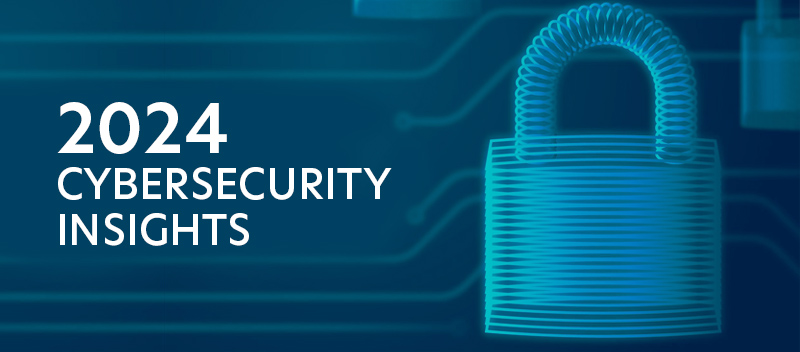
Navigating the cybersecurity landscape in 2024 feels like steering a ship through ever-changing waters. New threats are emerging faster than ever, challenging even the most seasoned security professionals. For CISOs and IT strategists, staying ahead isn’t just beneficial — it’s crucial. As cyber threats become more sophisticated, effective risk management strategies are your best defense. This blog post equips you with the latest best practices and innovative approaches to strengthen your organization’s risk management posture in 2024. The Evolving Threat Landscape: Why We Need to Adapt The threat landscape is not only evolving but doing so at a pace that requires constant vigilance. Here’s a closer look at what’s on the horizon and why adaptation is key: Emerging Threats Deepfakes: These sophisticated digital forgeries have moved beyond novelty status, presenting significant threats. Misinformation campaigns are using them more and more often in an attempt to distort political processes or public opinion. By pretending to be executives during video chats, deepfakes can help commit fraud in the business sector and result in unapproved transactions or data breaches. Supply Chain Attacks: Attacks targeting software supply chains are particularly dangerous because they exploit existing trust relationships. By compromising a trusted supplier, attackers can inject malicious code into legitimate software updates, affecting numerous organizations before the breach is even detected. This ripple effect can lead to widespread data breaches and operational disruptions. Ransomware-as-a-Service (RaaS): This business model for cybercrime lowers the entry barrier for cybercriminals by providing ready-made ransomware tools to those without technical expertise. It allows attackers to execute sophisticated ransomware attacks with relative ease, targeting organizations of all sizes. The commoditization of ransomware increases the volume and complexity of attacks, making them a persistent threat. Shifting Regulatory Landscape The regulatory environment is in flux, with new data privacy regulations on the horizon that could significantly impact risk management practices. Laws that may impose more stringent rules for data management and reporting will need organizations to adjust. To ensure data privacy and prevent severe penalties, these developments call for a review and potential revamp of present compliance practices. Retaining compliance and stakeholder and client trust requires being knowledgeable and flexible. Remote Work Challenges The shift to remote and hybrid work models continues to pose significant security challenges. Here’s what organizations need to focus on: Secure Device Management: With employees accessing company resources from personal devices, ensuring these devices are secure is paramount. Implementing policies for device encryption, regular updates, and endpoint protection can mitigate risks. Protecting Sensitive Data: Remote work increases the risk of data breaches, as sensitive information is accessed from various locations. Solutions such as virtual private networks (VPNs), multi-factor authentication, and data loss prevention tools are essential to safeguard data. Maintaining a Strong Security Posture: Ensuring a consistent security posture across various endpoints requires robust policies and continuous monitoring. Regular security training for employees can help reinforce a security-first mindset, reducing the likelihood of human error leading to security incidents. Adapting to these changes isn’t optional — it’s essential for maintaining a robust cybersecurity posture. As threats and regulations evolve, so do our risk management strategies. 2024 Risk Management Best Practices As we dive deeper into 2024, staying ahead in cybersecurity requires more than just keeping up with technology — it’s about adopting a new mindset. Here are some strategies that can truly make a difference: 1. Prioritize Proactive Measures Let’s face it: reacting to threats after they’ve occurred is like closing the barn door after the horse has bolted. Proactive risk management is about anticipating issues before they arise. Regular risk assessments and vulnerability simulations can help pinpoint weak spots early. This approach not only bolsters your defenses but also instills confidence in your security strategy. 2. Continuous Threat Intelligence Incorporating real-time threat intelligence into your risk assessments is no longer optional—it’s essential. By staying on top of global threat trends, you can tweak your defenses dynamically. This keeps your organization agile and ready to tackle potential threats head-on. 3. Zero Trust Architecture Zero Trust isn’t just a buzzword — it’s a philosophy that’s reshaping cybersecurity. By assuming that every access request is potentially a threat, you enforce strict verification protocols. This means that even if a network is compromised, the damage is contained, keeping your critical assets safe. 4. Focus on People-Centric Security Technology is just one part of the puzzle; people are the other. Cultivating a security-first mindset among your team is crucial. Regular training and awareness programs help employees recognize and avoid threats, turning them into your first line of defense against cyberattacks. 5. Invest in Automation and Orchestration Automation and Security Orchestration Automation Response (SOAR) tools are transforming how we handle cybersecurity. They automate routine tasks and coordinate complex processes, giving your team more time to focus on strategic threats. This not only boosts efficiency but also shortens response times when incidents occur. By embracing these best practices, you’re not just shielding your organization from the threats of 2024 — you’re building a resilient, forward-thinking security ecosystem. Innovative Approaches to Elevate Risk Management Here are some cutting-edge approaches that are reshaping risk management today: — Artificial Intelligence (AI) and Machine Learning (ML) AI and ML are revolutionizing cybersecurity by processing vast amounts of data to detect patterns and anomalies that are often missed by human analysts. AI in cybersecurity can swiftly predict potential threats before they escalate. Meanwhile, machine learning fine-tunes these processes, learning from each interaction to enhance accuracy and effectiveness over time. — Cybersecurity Mesh Architecture For handling security in remote contexts, the Cybersecurity Mesh Architecture provides an adaptable and scalable approach. The ability of various security services to work together seamlessly is made possible by this method, which is essential as more businesses shift to remote work and cloud services. Strong protection is provided across all network components by decentralizing security perimeters, which strengthens the overall security posture. — Threat Modeling 2.0 As IT infrastructures become more complex, traditional threat modeling needs an upgrade. Threat Modeling 2.0 addresses the intricacies of
Building a Risk-Aware Culture in Your Organization

IT experts are on the front lines of today’s digital world, entrusted with protecting valuable digital assets from a wide range of constantly changing cyber threats. The pressure to keep ahead of possible breaches is intense, making this a hard undertaking. As the guardians of an organization’s security, IT teams must not only react to threats but anticipate and mitigate them proactively. Establishing a risk-aware culture within the IT department is crucial for this proactive stance, ensuring every team member is vigilant and prepared. This blog post equips IT managers and security professionals with practical strategies to cultivate a risk-aware culture within their teams. The IT Role in Driving a Risk-Aware Culture In an increasingly interconnected world, the role of IT in fostering a risk-aware culture is pivotal. IT leaders and professionals are not just gatekeepers of technology but torchbearers of security within organizations. Here’s how they can drive a risk-aware culture: Leadership Influence Set the Tone: IT leaders have the unique responsibility and privilege of setting the organizational tone for security. Their unwavering commitment to safeguarding data and systems can inspire a company-wide culture of vigilance and responsibility. Lead by Example: Demonstrating transparency and accountability in security practices can encourage other departments to value and adopt similar standards. By prioritizing security in decision-making and everyday operations, leaders instill a risk-conscious mindset across the organization. Technical Expertise Educate and Empower: IT professionals, with their deep technical knowledge, play a crucial role as educators within the organization. They can conduct regular training sessions to raise awareness about cyber threats and the best practices for mitigating them. Subject Matter Experts: As trusted experts, IT staff can guide colleagues through complex security landscapes, simplifying jargon and clarifying procedures to ensure everyone understands their role in maintaining security. Foster Collaboration: By promoting open dialogues and cross-departmental collaboration, IT experts can empower teams to work together towards a common goal of enhanced security, fostering a collective sense of ownership. By leveraging leadership influence and technical expertise, IT departments can cultivate a robust, risk-aware environment that keeps the organization secure and resilient. To further promote a risk-aware culture in your organization, check out our security awareness training solutions Fostering a Culture of Continuous Learning Building a culture that prioritizes ongoing education helps IT teams stay ahead of threats and adapt to new challenges. Here’s how this can be achieved Security Awareness Training Tailored Programs: Ongoing security awareness training should be customized to address the unique needs of IT staff. This entails concentrating on situations that they will probably face in the real world to make the training applicable and effective. Regular Updates: Cyber threats evolve rapidly, so training programs must be updated regularly. IT professionals may stay ahead of the curve in their protection tactics by updating information often and keeping it in line with emerging threats. Interactive Sessions: By adding interactive components like role-playing and practical exercises, training may become more successful by increasing student engagement and retention. Feedback Loops: Encourage feedback from participants to continuously refine and improve training sessions, ensuring they meet the changing needs of the team. Technical Skills Development Investment in Growth: Organizations should invest in the professional development of their IT teams, providing opportunities for learning about emerging threats and cutting-edge technologies. This could involve workshops, webinars, or certification programs, all designed to enhance technical skills. Staying Current: By staying updated on best practices and industry standards, IT staff can apply the latest knowledge to protect the organization’s digital assets effectively. Mentorship Programs: Establishing mentorship initiatives can facilitate knowledge transfer between seasoned professionals and newer team members, fostering a collaborative learning environment. Cross-Training Opportunities: Encourage IT staff to explore different areas within the department, promoting a well-rounded skill set that enhances overall team resilience. Organizations can foster a culture where continuous learning is the norm, empowering IT professionals to excel in their roles and safeguard their digital environment. Empowering IT Teams: Fostering Ownership The foundation for developing a risk-aware culture in IT departments is giving staff the freedom to be proactive in cybersecurity. IT managers may boost a sense of accountability among their staff members and improve the security posture of their company by encouraging ownership. Here’s how to do it: Incident Response Teams Central Role in Security: IT teams are the frontline defenders in incident response, tasked with swiftly handling security incidents to minimize damage. Empowering these teams means giving them the authority and resources to act decisively and effectively. Ownership and Accountability: Encouraging IT teams to take ownership of security incidents instills a sense of responsibility. Organizations may improve their reaction skills by giving them the tools and resources they need and include them in the decision-making process. Continuous Improvement: Encourage a mindset of learning from each incident. Post-incident reviews should be conducted to identify areas for improvement, ensuring the team is even better prepared for future challenges. Open Communication Channels Fostering a Supportive Environment: Open communication is vital to a risk-aware culture. IT professionals should feel comfortable reporting security concerns without fear of blame or retribution. This openness encourages prompt reporting of potential issues, allowing for quicker resolutions. Encouraging Dialogue: IT managers should promote open dialogue by establishing regular meetings or forums where team members can discuss challenges, share insights, and seek advice. This collaborative approach strengthens the team’s collective cybersecurity awareness and problem-solving capabilities. Feedback Mechanisms: Implement feedback systems that allow IT staff to voice their opinions on current processes and suggest improvements. This inclusive approach fosters a sense of community and shared purpose. Ownership not only enhances IT security but also boosts team morale, as professionals feel valued and integral to their company’s cybersecurity strategy. Maintaining Momentum: Continuous Improvement To sustain a robust risk-aware culture in IT security, continuous improvement is key. IT managers must lead the charge in keeping cybersecurity strategies agile and effective. Here’s how to maintain momentum: Regular Security Assessments Proactive Threat Identification: Conducting regular security assessments helps IT teams identify vulnerabilities before they can be exploited. These assessments serve as
TrustNet is Named Finalist of the Coveted Top InfoSec Innovator Awards for 2024
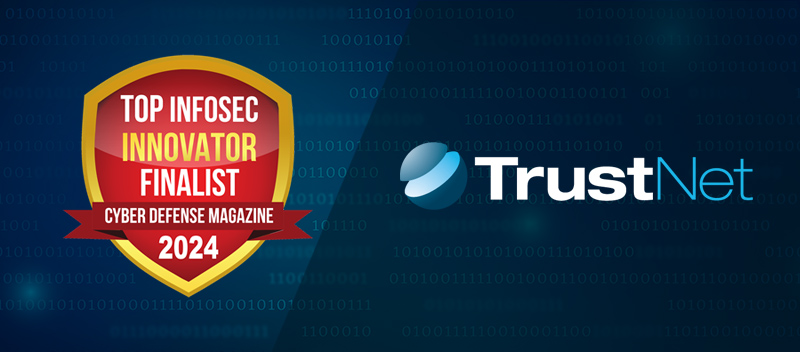
LAS VEGAS, NEVADA (CYBERDEFENSEWIRE) AUGUST 8, 2024 – TrustNet is proud to announce that during BlackHat USA 2024, we have been named a finalist for the following award from Cyber Defense Magazine (CDM), the industry’s leading electronic information security magazine: Since 2003, TrustNet has been at the forefront of cybersecurity and compliance, providing businesses worldwide with unparalleled protection and peace of mind. TrustNet’s innovative Triple A approach—Advisory, Audit, and Automation—ensures comprehensive safeguards against evolving threats, backed by its expert team with a client-first mindset and advanced solutions. Judging continues through October 2024, when winners will be announced online, in print, and during Cyber Defense Con 2024, taking place October 31 – November 1, 2024 in Orlando, Florida, USA, where a select group of winners will be given the opportunity to showcase their innovative solutions to the Top Global CISOs during their invitation-only conference at https://www.cisoconference.com. “We’re thrilled to receive this recognition in one of the most prestigious and coveted cybersecurity awards in the world from Cyber Defense Magazine, during their 12th anniversary as an independent cybersecurity news and information provider. We knew the competition would be tough and with top judges who are leading infosec experts from around the globe, we couldn’t be more pleased,” said Trevor Horwitz, Founder and CISO of TrustNet Inc. [/et_pb_text][et_pb_image src=”https://trustnetinc.com/wp-content/uploads/2024/09/top-infosec-finalist-badge-png-1.png” title_text=”top-infosec-finalist-badge-png-1″ align=”center” _builder_version=”4.25.0″ _module_preset=”default” width=”67%” global_colors_info=”{}”][/et_pb_image][et_pb_text quote_border_weight=”3px” quote_border_color=”gcid-c6a045ad-93f2-41aa-bea3-317846c80b16″ _builder_version=”4.25.0″ _module_preset=”default” text_font=”Hero New Regular|300|||||||” text_text_color=”gcid-f90447ab-4baa-4389-a89e-9e109c0034c2″ text_font_size=”16px” text_line_height=”1.9em” ul_line_height=”1.6em” quote_line_height=”2em” header_font=”Hero New Regular|700|||||||” header_2_line_height=”1.7em” header_4_line_height=”1.6em” custom_margin=”2em||||false|false” global_colors_info=”{%22gcid-f90447ab-4baa-4389-a89e-9e109c0034c2%22:%91%22text_text_color%22%93,%22gcid-c6a045ad-93f2-41aa-bea3-317846c80b16%22:%91%22quote_border_color%22%93}”] “TrustNet embodies three major features we judges look for with the potential to become winners: understanding tomorrow’s threats today, providing a cost-effective solution, and innovating in unexpected ways that can help mitigate cyber risk and get one step ahead of the next breach,” said Gary S. Miliefsky, Publisher of Cyber Defense Magazine. We’re thrilled to be a member of this coveted group of finalists in the Cyber Defense Awards. About TrustNet For mid-size and large organizations across multiple industries, TrustNet helps build trusted relationships with customers, partners, and employees by providing top-tier cybersecurity and compliance services. Unlike other service providers, we offer a comprehensive suite of managed security, consulting, and compliance solutions under one roof. Since 2003, we have been a strategic partner in ensuring the security and integrity of our clients’ businesses. Based in Atlanta, Georgia, we serve both public and private sectors in the United States and globally. TrustNet helps businesses navigate complex regulations and enhance data security through our expert compliance advisory and audit services. Our success stories include fortifying cybersecurity for Calendly, ensuring SOC 2 compliance for ExperiencePoint, fast-tracking audits for Canda Solutions, streamlining compliance for Certified Medical Consultants, and managing annual audits for Cervey. Clients have praised TrustNet’s impact, with David Haapalehto from ExperiencePoint stating, “This certification bolsters our clients’ confidence in our capacity to protect personal and organizational data,” and Chris Porter from Cervey noting, “TrustNet’s team makes the annual SOC 2 Type 2 audit process smooth and efficient.” These testimonials underscore TrustNet’s pivotal role in bolstering client confidence and safeguarding sensitive data. For more than 20 years, TrustNet has remained committed to providing our clients with expert compliance advisory and audit services. Be inspired by their journeys. Check out our clients’ success stories. About Cyber Defense Awards This is Cyber Defense Magazine’s twelfth year of honoring InfoSec innovators from around the Globe. Our submission requirements are for any startup, early stage, later stage, or public companies in the INFORMATION SECURITY (INFOSEC) space who believe they have a unique and compelling value proposition for their product or service. Learn more at www.cyberdefenseawards.com. About Cyber Defense Magazine Cyber Defense Magazine is the premier source of cyber security news and information for InfoSec professions in business and government. We are managed and published by and for ethical, honest, passionate information security professionals. Our mission is to share cutting-edge knowledge, real-world stories, and awards for the best ideas, products, and services in the information technology industry. We deliver electronic magazines every month online for free, as well as special editions exclusively for the RSA Conferences and Cyber Defense Conferences. CDM is a proud member of the Cyber Defense Media Group. Learn more about us by visiting the website, or Cyber Defense TV visit and Cyber Defense Radio to see and hear some of the most informative interviews of many of these award-winning company executives. Search for a Cybersecurity job or post an infosec job for free anytime. Join a webinar and realize that infosec knowledge is power. [et_pb_column type=”2_5″ _builder_version=”4.25.0″ _module_preset=”default” global_colors_info=”{}”][/et_pb_column][/et_pb_row][et_pb_row column_structure=”2_5,3_5″ module_id=”tn-post-content” _builder_version=”4.23.1″ _module_preset=”default” max_width=”1336px” module_alignment=”center” custom_margin=”-40px||||false|false” locked=”off” global_colors_info=”{}”][et_pb_column type=”2_5″ _builder_version=”4.23.1″ _module_preset=”default” global_colors_info=”{}”][et_pb_text _builder_version=”4.25.0″ _module_preset=”default” text_font=”Hero New Regular|300|||||||” text_text_color=”gcid-f90447ab-4baa-4389-a89e-9e109c0034c2″ text_line_height=”1.9em” header_font=”Hero New Regular|700|||||||” header_line_height=”1.5em” header_3_font=”||||||||” custom_margin=”20px|-150px|||false|false” global_colors_info=”{%22gcid-f90447ab-4baa-4389-a89e-9e109c0034c2%22:%91%22text_text_color%22%93}”] Ready to take your cybersecurity to the next level? TrustNet is here to guide you every step of the way. Talk to an expert today.
Shield Your Supply Chain: TrustNet’s Third-Party Risk Management

Blog [su_post] [/et_pb_text][et_pb_post_title author=”off” comments=”off” featured_image=”off” _builder_version=”4.21.2″ _module_preset=”default” title_font=”Hero New Regular|700|||||||” title_text_color=”gcid-905e3263-d1c0-445c-81b8-4da154a62fbe” title_font_size=”3em” title_line_height=”1.2em” title_font_size_tablet=”2.4em” title_font_size_phone=”2.2em” title_font_size_last_edited=”on|phone” global_colors_info=”{%22gcid-905e3263-d1c0-445c-81b8-4da154a62fbe%22:%91%22title_text_color%22%93}”][/et_pb_post_title][et_pb_image src=”https://trustnetinc.com/wp-content/uploads/2024/09/third-party-risk-management.jpg” alt=”compliance” title_text=”third party risk management” _builder_version=”4.25.0″ _module_preset=”default” border_radii=”on|10px|10px|10px|10px” global_colors_info=”{}”][/et_pb_image][et_pb_code _builder_version=”4.21.2″ _module_preset=”default” global_colors_info=”{}”] [/et_pb_code][et_pb_post_nav prev_text=”Previous Post” next_text=”Next Post” _builder_version=”4.21.2″ _module_preset=”default” title_font=”Hero New Regular|||on|||||” title_text_color=”gcid-c6a045ad-93f2-41aa-bea3-317846c80b16″ custom_padding=”8px|16px|8px|16px|true|true” border_radii=”on|8px|8px|8px|8px” border_width_all=”1px” border_color_all=”gcid-c6a045ad-93f2-41aa-bea3-317846c80b16″ global_colors_info=”{%22gcid-c6a045ad-93f2-41aa-bea3-317846c80b16%22:%91%22border_color_all%22,%22title_text_color%22%93}”][/et_pb_post_nav][et_pb_text quote_border_weight=”3px” quote_border_color=”gcid-c6a045ad-93f2-41aa-bea3-317846c80b16″ _builder_version=”4.25.0″ _module_preset=”default” text_font=”Hero New Regular|300|||||||” text_text_color=”gcid-f90447ab-4baa-4389-a89e-9e109c0034c2″ text_font_size=”16px” text_line_height=”1.9em” ul_line_height=”1.6em” quote_line_height=”2em” header_font=”Hero New Regular|700|||||||” header_2_line_height=”1.7em” header_4_line_height=”1.6em” custom_margin=”2em||||false|false” global_colors_info=”{%22gcid-f90447ab-4baa-4389-a89e-9e109c0034c2%22:%91%22text_text_color%22%93,%22gcid-c6a045ad-93f2-41aa-bea3-317846c80b16%22:%91%22quote_border_color%22%93}”] hird-party risk is a critical concern that can impact the entire supply chain. As businesses increasingly rely on external vendors and partners, managing these risks has become paramount. Third-party risk management involves identifying and mitigating potential threats external entities pose, ensuring that enterprises can maintain operational integrity and compliance. TrustNet stands at the forefront of this challenge, offering comprehensive solutions in vendor risk management, cybersecurity, and supply chain risk. Through meticulous risk assessment and due diligence, TrustNet empowers businesses to navigate the complexities of external partnerships with confidence. Understanding Third-Party Risk The possible risks and weaknesses that develop when companies interact with outside partners, suppliers, or service providers are referred to as third-party risks. Third-party relationships are crucial to operations in today’s global market, but they also provide a unique set of difficulties. It is essential to comprehend these risks in order to handle third-party risks effectively. Types of Third-Party Risks Operational Risk: This involves disruptions in the supply chain or business processes due to the failure of third-party vendors. Such risks can lead to delays, increased costs, or even halt operations. Financial Risk: Financial instability of a third-party can affect your company’s financial health. This risk involves the loss of money due to credit issues, unexpected price changes, or unreliable financial practices of vendors. Reputational Risk: The actions or failures of a third-party can damage your company’s reputation. This includes negative publicity, legal penalties, or loss of customer trust. Cybersecurity Risk: Third-parties with inadequate cybersecurity measures can be a gateway for cyber-attacks. This risk threatens data security and can lead to breaches, data loss, or non-compliance with data protection regulations. Impact of Third-Party Failures The impact of third-party failures on an organization can be severe and far-reaching: Operational Disruptions: Interruptions in the supply chain risk can lead to delays and loss of productivity. Financial Losses: Failed contracts or poor vendor management can result in unexpected costs. Regulatory Fines: Non-compliance due to third-party actions can attract legal penalties. Loss of Trust: Customer and stakeholder trust can be significantly damaged by third-party mishaps. Effective third-party risk management involves thorough risk assessment and due diligence. By identifying potential vulnerabilities early on, businesses can implement strategies to mitigate these risks, thus ensuring compliance and safeguarding their reputation and operations. For more on our third-party risk assessment services, Click Here The Importance of Third-Party Risk Management As organizations increasingly rely on external partners, there is a growing emphasis on adhering to regulatory and compliance requirements. Regulatory and Compliance Requirements Compliance with regulations such as GDPR, HIPAA, and others is vital. These regulations demand strict oversight of third-party interactions to protect sensitive data and ensure privacy. Failing to meet compliance standards can lead to hefty fines and legal ramifications, stressing the importance of comprehensive vendor risk management. Financial and Reputational Consequences The repercussions of third-party breaches extend beyond financial loss: Financial Consequences: Breaches can result in direct financial losses from fraud or penalties. Indirect costs such as increased insurance premiums and the expense of damage control efforts also add up. Reputational Damage: A third-party failure can severely tarnish a company’s reputation. Negative perceptions can lead to a loss of customer trust and a decline in market share. Enhancing Organizational Resilience Effective third-party risk management enhances organizational resilience by: Reducing Supply Chain Risk: By assessing and managing third-party risks, companies can maintain stability and continuity in their supply chains. Strengthening Cybersecurity: Implementing robust cybersecurity risk strategies helps protect against data breaches and cyber threats introduced by third parties. Facilitating Due Diligence and Risk Assessment: Regular due diligence and thorough risk assessments ensure that potential threats are identified early and mitigated efficiently. Through proactive third-party risk management, organizations can safeguard their operations, maintain compliance, and preserve their reputation, ultimately enhancing their ability to withstand and recover from disruptions. TrustNet’s Third-Party Risk Management Solution TrustNet adopts a comprehensive approach to third-party risk management, empowering organizations to align their cyber risk management decisions with their unique priorities, constraints, and risk tolerances. This strategic alignment is crucial for managing complex vendor relationships and enhancing supply chain visibility. Key Features of TrustNet’s Solution Vendor Risk Management Processes: TrustNet collaborates with all organizational stakeholders to develop, assess, and manage vendor risk management processes effectively. This ensures a holistic approach to third-party risk. Risk Assessment and Mitigation: By identifying, prioritizing, and assessing suppliers and third-party partners, TrustNet facilitates targeted risk mitigation. This process ensures that critical cyber supply-chain components are secure. Contractual Obligations: TrustNet helps organizations implement measures to comply with Information Security and Cyber Supply Chain Risk Management requirements, reinforcing vendor accountability. Ongoing Assessments: Regular audits, assessments, and reviews are conducted to ensure that vendors and third parties remain compliant, adapting to evolving risks and standards. Breach Response Management: TrustNet provides robust vendor breach response strategies and recovery plans, minimizing downtime and potential damage from cybersecurity incidents. Benefits of TrustNet’s Solution Continuous Monitoring: With 24/7/365 cyber risk monitoring, TrustNet prevents breaches and reduces remediation costs, offering peace of mind to organizations. Quality and Reliability: TrustNet leverages deep technical expertise and extensive data to deliver high-quality cyber risk ratings. Services are provided from secure, world-class data centers, ensuring reliability. Affordability: TrustNet’s solution is designed to be cost-effective, allowing businesses to manage vendor security and compliance risks affordably on a monthly basis. By implementing TrustNet’s third-party risk management solution, organizations can enhance their vendor management capabilities and achieve greater supply chain visibility, all while maintaining a strong defense against cyber threats. Talk to our experts today! Best Practices for Third-Party Risk Management Implementing the best practices for third-party risk management can help streamline processes and ensure
Compliance Expertise at Your Fingertips: TrustNet Consulting Services

Blog [su_post] [/et_pb_text][et_pb_post_title author=”off” comments=”off” featured_image=”off” _builder_version=”4.21.2″ _module_preset=”default” title_font=”Hero New Regular|700|||||||” title_text_color=”gcid-905e3263-d1c0-445c-81b8-4da154a62fbe” title_font_size=”3em” title_line_height=”1.2em” title_font_size_tablet=”2.4em” title_font_size_phone=”2.2em” title_font_size_last_edited=”on|phone” global_colors_info=”{%22gcid-905e3263-d1c0-445c-81b8-4da154a62fbe%22:%91%22title_text_color%22%93}”][/et_pb_post_title][et_pb_image src=”https://trustnetinc.com/wp-content/uploads/2024/09/TrustNet-Consulting-Services-1.jpg” alt=”compliance” title_text=”TrustNet Consulting Services” _builder_version=”4.25.0″ _module_preset=”default” border_radii=”on|10px|10px|10px|10px” global_colors_info=”{}”][/et_pb_image][et_pb_code _builder_version=”4.21.2″ _module_preset=”default” global_colors_info=”{}”] [/et_pb_code][et_pb_post_nav prev_text=”Previous Post” next_text=”Next Post” _builder_version=”4.21.2″ _module_preset=”default” title_font=”Hero New Regular|||on|||||” title_text_color=”gcid-c6a045ad-93f2-41aa-bea3-317846c80b16″ custom_padding=”8px|16px|8px|16px|true|true” border_radii=”on|8px|8px|8px|8px” border_width_all=”1px” border_color_all=”gcid-c6a045ad-93f2-41aa-bea3-317846c80b16″ global_colors_info=”{%22gcid-c6a045ad-93f2-41aa-bea3-317846c80b16%22:%91%22border_color_all%22,%22title_text_color%22%93}”][/et_pb_post_nav][et_pb_text quote_border_weight=”3px” quote_border_color=”gcid-c6a045ad-93f2-41aa-bea3-317846c80b16″ _builder_version=”4.25.0″ _module_preset=”default” text_font=”Hero New Regular|300|||||||” text_text_color=”gcid-f90447ab-4baa-4389-a89e-9e109c0034c2″ text_font_size=”16px” text_line_height=”1.9em” ul_line_height=”1.6em” quote_line_height=”2em” header_font=”Hero New Regular|700|||||||” header_2_line_height=”1.7em” header_4_line_height=”1.6em” custom_margin=”2em||||false|false” global_colors_info=”{%22gcid-f90447ab-4baa-4389-a89e-9e109c0034c2%22:%91%22text_text_color%22%93,%22gcid-c6a045ad-93f2-41aa-bea3-317846c80b16%22:%91%22quote_border_color%22%93}”] Keeping up with regulatory compliance is no small feat. Compliance officers, risk managers, IT professionals, and business leaders constantly face complex and evolving regulations. Enter TrustNet—a trusted leader in compliance consulting. With over a decade of experience and a global footprint, TrustNet offers unparalleled compliance expertise. We guide organizations through compliance assessments, strategic planning, and developing a clear compliance roadmap. Our unique project methodology ensures that every client receives tailored solutions to effectively reduce risks, bolster security, and manage compliance costs. TrustNet’s Compliance Consulting Services As a leader in compliance consulting, TrustNet provides a wide range of services aimed at assisting businesses in achieving and preserving strong regulatory compliance. Our approach is grounded in a deep understanding of compliance challenges, ensuring each client receives personalized guidance throughout their compliance journey. Compliance Assessment: Conduct thorough evaluations to identify compliance gaps. Analyze current practices against regulatory requirements. Strategy Development: Craft customized compliance strategies aligned with business goals. Develop a clear compliance roadmap to guide future efforts. Implementation: Facilitate the deployment of compliance strategies with precision. Ensure seamless integration of regulatory requirements into daily operations. Ongoing Support: Provide continuous monitoring and updates to adapt to regulatory changes. Offer expert advice and assistance to navigate complex compliance landscapes. Request a quotetoday for more information on our comprehensive compliance services. Compliance Assessment and Gap Analysis Businesses may evaluate their present compliance status and what needs to be done to improve it by performing compliance gap studies in an organized, strategic way. All potential non-compliance areas, as well as legal liabilities are identified so each organization knows about its legal standing. — Gap Analysis TrustNet begins with a thorough compliance gap analysis, which serves as the cornerstone for identifying disparities between existing practices and regulatory standards and what needs improvement. — Gathering Information At this step, TrustNet gathers comprehensive information regarding an organization’s policies, procedures, and practices in order to better assess how compliance is being managed as well as any possible vulnerabilities or gaps that might exist. — Risk Assessment Once TrustNet has collected the required information, we evaluate any gaps identified along with associated risks to gain a better understanding of their severity and impact on organizational compliance health. Through our thorough procedure, businesses are guaranteed to identify their compliance gaps and to have the information and resources necessary for effectively addressing them. Developing a Robust Compliance Strategy TrustNet excels at crafting strategies to successfully navigate the increasingly complex regulatory landscape, and creating plans that meet both industry standards and your organization’s individual requirements – so compliance becomes part of its operations rather than an afterthought. 1. Tailored Strategies At TrustNet, we believe that one-size-fits-all solutions simply don’t cut it. We collaboratively customized compliance strategies tailored specifically for regulations like HIPAA, ISO 27001, PCI DSS, GDPR, and more. By aligning efforts with business goals we help facilitate seamless incorporation of regulatory requirements into operations. 2. Industry Best Practices Our strategies are informed by industry best practices and the latest regulatory insights. We ensure that your compliance framework not only adheres to current standards but also anticipates future changes, keeping you ahead in the regulatory landscape. 3. Comprehensive Compliance Audits To establish a solid strategy, we conduct thorough compliance audits that evaluate your current posture against both regulatory requirements and your business objectives. This foundational step provides a clear understanding of where you stand and what actions are needed to enhance your compliance framework. 4. Focused Compliance Remediation Should the audit reveal any areas needing improvement, TrustNet is equipped to guide you through effective compliance remediation. We prioritize issues by their impact and urgency; to make your compliance strategy actionable rather than theoretical. By tapping TrustNet’s expertise, businesses can confidently navigate the regulatory environment knowing they have an effective compliance strategy in place. Talk to our experts today! Implementation and Support Transitioning from a compliance plan to a successful implementation can be difficult, but TrustNet can make the process go smoothly and provide continuing support throughout the whole implementation process and beyond. Seamless Implementation TrustNet takes a hands-on approach in executing your compliance program, ensuring each element is meticulously integrated into your organization’s operations. Our team collaborates with your internal stakeholders to align processes and systems with the outlined compliance strategy, minimizing disruptions and maximizing efficiency. Continuous Support Once the compliance program is in place, TrustNet offers ongoing support to help you adapt to the ever-evolving regulatory landscape. Continuous monitoring ensures your organization remains compliant with new regulations and industry standards, while our experts remain on hand to assist and resolve any compliance-related issues, keeping operations running efficiently. Expert Guidance Training and Education: We equip your team with the knowledge and skills necessary to uphold compliance standards through tailored training sessions and workshops. Regular Updates: TrustNet ensures that your compliance framework is consistently updated to reflect the latest regulatory changes, safeguarding your organization against potential risks. Proactive Problem Solving: Our proactive approach allows us to identify and address compliance challenges before they impact your business, maintaining your strategic advantage. With TrustNet by your side, you gain more than just a service provider; you gain a dedicated partner committed to your compliance success. Industry Expertise TrustNet stands out with our vast knowledge of multiple industries and the specific regulations governing them, along with an in-depth knowledge of compliance challenges faced by each sector – our understanding allows us to offer tailored solutions that promote effective compliance management. Retail: We address consumer protection laws and data privacy regulations with strategies like PCI DSS compliance to safeguard customer data while increasing trust in retail environments. Healthcare: With complex regulations such


